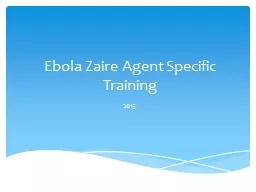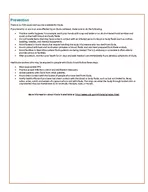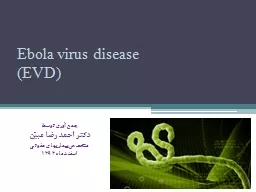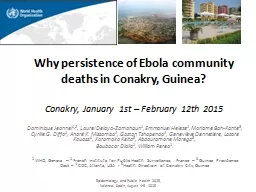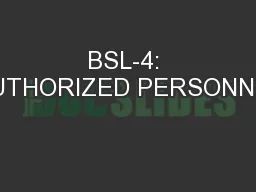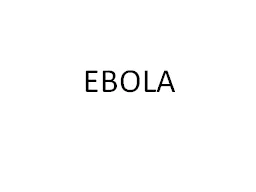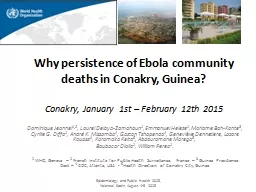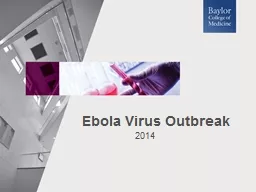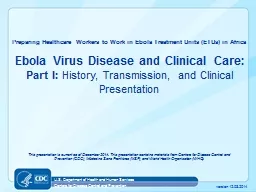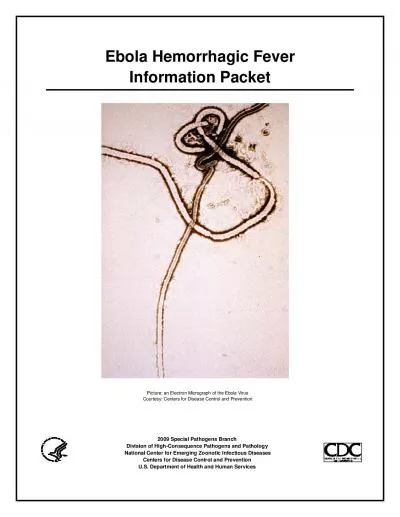PPT-Ebola Zaire Agent Specific Training
Author : jane-oiler | Published Date : 2019-02-08
Since 2014 West Africa has experienced the largest outbreak of Ebola in history with multiple countries affected Two imported cases including one death and two
Presentation Embed Code
Download Presentation
Download Presentation The PPT/PDF document "Ebola Zaire Agent Specific Training" is the property of its rightful owner. Permission is granted to download and print the materials on this website for personal, non-commercial use only, and to display it on your personal computer provided you do not modify the materials and that you retain all copyright notices contained in the materials. By downloading content from our website, you accept the terms of this agreement.
Ebola Zaire Agent Specific Training: Transcript
Download Rules Of Document
"Ebola Zaire Agent Specific Training"The content belongs to its owner. You may download and print it for personal use, without modification, and keep all copyright notices. By downloading, you agree to these terms.
Related Documents

